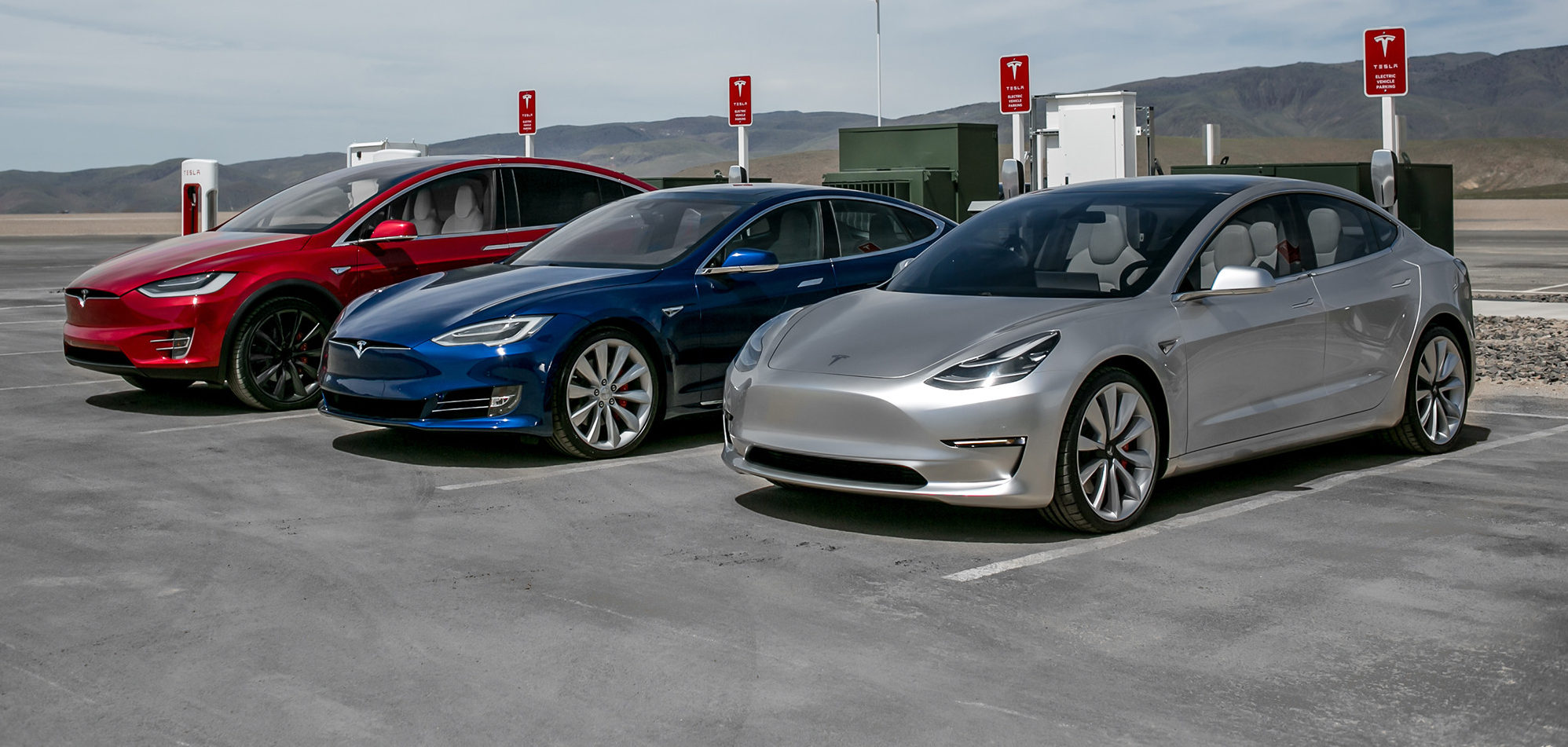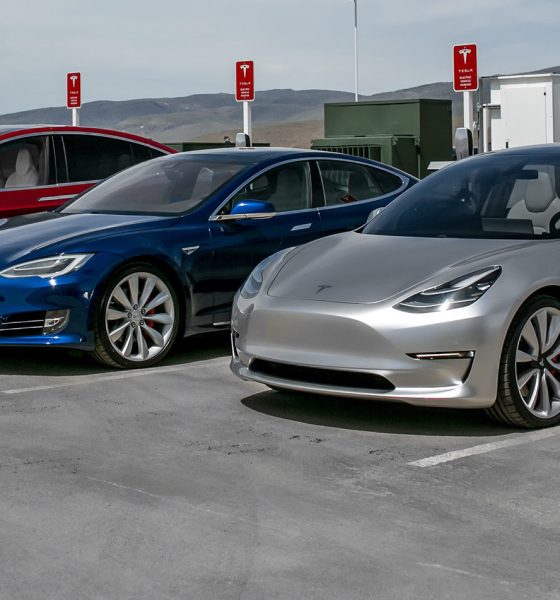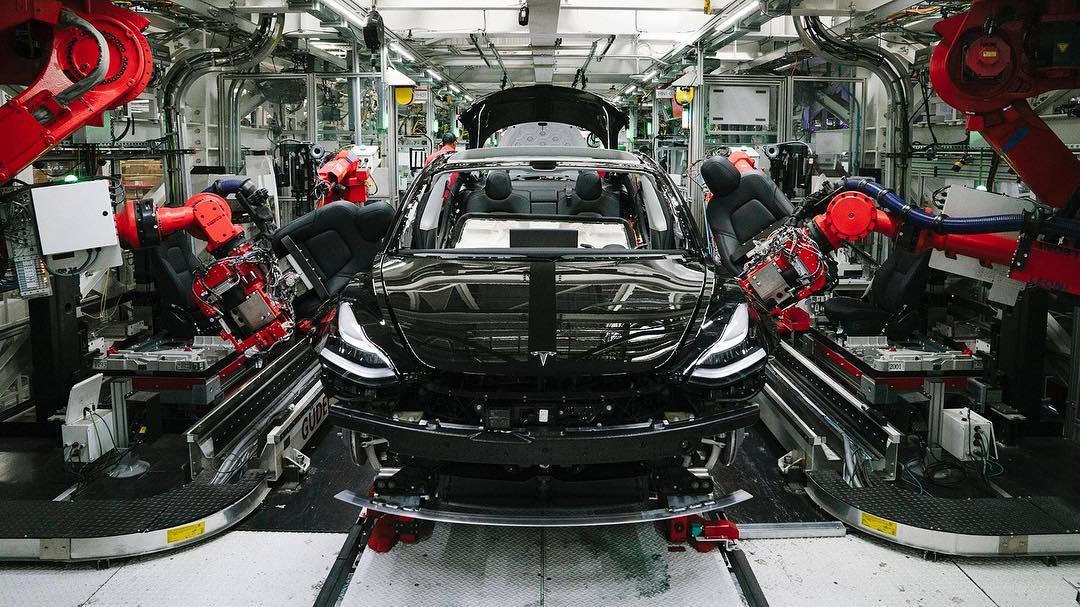

News
Tesla faces biggest challenge yet as oil industry fights to maintain its hold on US auto
Tesla might have overcome several notable hurdles this year, but the electric car maker is now facing what could very well be its biggest challenge yet in the United States. As the company hits its stride with the production of the Model 3 and as it prepares to ramp its energy business next year, a rather discreet movement is underway to ensure that America remains waist-deep in oil.
A recent expose published by The New York Times outlines an active campaign to roll back the country’s existing vehicle emissions rules. Earlier this year, the US government laid out a plan that aims to ease fuel efficiency standards in the country. The movement’s central point is simple — since America is so awash in oil, the country no longer needs to worry about energy conservation.
The publication’s investigation noted that the movement, which was supported by proposals in Congress and social media campaigns, is backed by some of the United States’ largest oil interests. Marathon Petroleum, the US’ largest refiner, as well as a policy network with ties to billionaire Charles G. Koch, contributed to help push the movement’s agenda. Overall, the creation of the proposal and its support from the oil industry is understandable, considering that the advent of electric vehicles threatens the bottom line of the industry. Less gas-thirsty cars on the road mean lower sales of gasoline. More pure electric vehicles on the road, such as Tesla’s electric cars, are an even bigger threat.
The US government’s initiative takes aim at the country’s emissions standards, which practically requires automakers to double the fuel efficiency of their vehicles by 2025. Under the government’s proposal, emissions standards would be frozen at 2020 levels. The NYT estimates that if the government’s planned rollback is implemented, it would increase greenhouse gas emissions in the United States by more than the amount of gases put out by midsize countries such as Austria, Greece, or Bangladesh in one year.

Lawmakers and delegations across the United States have backed the pro-oil campaign, with several groups sending letters to the Transportation Department to express their support. The publication noted that these letters featured much of the same phrasing, particularly a line directly referencing the preferences of American car buyers. “With oil scarcity no longer a concern, historically low gas prices, increasingly ambitious CAFE requirements, it is important that NHTSA and EPA review the mandate to ensure that the US is protecting consumers from higher costs and still allowing for choice in vehicles that best fit their needs,” one of the letters stated.
The oil-backed movement, though, is currently encountering some pushback from members of the government. Among these is Senator Tom Carper of Delaware, who expressed his criticism of the administration’s campaign. In a statement to the NYT, Carper noted that “oil interests are cynically trying to gin up support in Congress for the weakest possible standards to ensure that cars and SUVs have to rely on even more oil.” The senator added that “If this attempt is successful, the outcome will be a blow to the auto industry, consumers, and our environment.”
At the forefront of the resistance against the oil-backed campaign is California, home to Tesla’s headquarters and electric car factory. California pledged to stick to stricter emissions standards while maintaining an initiative to push the adoption of zero-emissions vehicles. Thirteen states currently follow CA’s lead, representing about 35% of the United States’ nationwide car sales.
At the heart of the movement is the notion that American car buyers prefer large, gas-guzzling vehicles such as full-sized pickup trucks and SUVs over zero-emissions vehicles. This is a market barely touched by electric car makers today, with cars such as the Tesla Model X competing in the luxury SUV segment — a far smaller and notably higher-priced market than those populated by gas-powered best-sellers such as the Chevrolet Suburban. The same is true for the pickup truck market, which is home to the Ford F-150, the country’s best-selling vehicle. Serious all-electric pickup trucks such as Rivian’s R1T have been unveiled recently, but just like the Model X, the R1T is a luxury vehicle at its core.

Tesla has matured greatly this year, as the company overcame the Model 3’s production hell and as Elon Musk dealt with the repercussions of his online behavior. Considering the pro-oil movement stirring in the country, though, Tesla might need to take even greater responsibilities in the immediate future. Being a first mover in the electric car revolution, Tesla has the potential to take the lead in bringing compelling vehicles that can compete with gasoline-powered cars on both performance and price. The company is already accomplishing this with the Model 3, as proven by the electric sedan’s impressive sales figures over the past months. So far, though, Tesla is yet to release vehicles that can truly take on the country’s gas guzzlers at a similar price point.
This might change next year, as Tesla is expected to reveal the Model Y SUV. The Model Y is designed to be the SUV counterpart of the Model 3 — powerful, practical, and attainable by the everyman — and if Elon Musk’s recent statements are any indication, the vehicle’s unveiling could be just around the corner. Tesla could very well be targeting the mainstream, seven-seat SUV market with the Model Y, with Musk recently describing the vehicle as a “midsize SUV” during an appearance at the Recode Decode podcast. Musk has also indicated that Tesla might be releasing its pickup truck earlier than expected.
Tesla, though, is not capable of pushing the EV revolution alone. Thus, it is pertinent for EV startups such as Rivian and Bollinger Motors to step up to the challenge and perhaps accelerate the development and release of their electric vehicles. Legacy automakers that have committed to an electrified future, such as Porsche and Jaguar, must expedite the release of compelling zero-emissions cars as well. Porsche and Jaguar have already taken a notable step with the Taycan and the I-PACE, but far more steps need to be taken.

For its part, Tesla would best be served by a steadier hand in the coming quarters. With an aggressive campaign to keep the United States entrenched in oil ongoing, Tesla must lead in a manner that is quick, efficient, and steady. Thus, mistakes such as the over-automation of the Model 3 assembly line, as well as Elon Musk’s Twitter gaffes, should best be avoided. Tesla is already a fast-evolving company, having grown to a major automaker in all but 15 years. Considering the presence of the government’s oil-backed campaign, though, Tesla is at a point where it must evolve even faster than before.
For now, the US’ auto industry appears to be facing a crossroads. On the one hand, there are companies such as Tesla proving that electric cars such as the Model 3 are viable and competitive. On the other hand, there are groups lobbying to maintain the auto industry’s reliance on oil. If a recent public hearing in Colorado is any indication, though, it appears that support for sustainable transportation is very much present.
Last month, Americans for Prosperity representative Shari Shiffer-Krieger attended a public hearing about Colorado’s pending decision to follow California’s lead. Americans for Prosperity is among the oil industry’s supporters. In Iowa, the group joined the fight against an initiative that would make it easier for gas stations to install electric car charging stations, and in Illinois, the group discouraged state officials from considering subsidies for EVs. Speaking to Colorado’s regulators, Shiffer-Krieger argued that buyers in the rugged state preferred powerful SUVs over stricter emissions rules.
“Coloradans deserve much better,” she said.
Colorado’s regulators accommodated her, before allying themselves with California.

News
Tesla (TSLA) receives “Buy” rating and $551 PT from Canaccord Genuity
He also maintained a “Buy” rating for TSLA stock over the company’s improving long-term outlook, which is driven by autonomy and robotics.

Canaccord Genuity analyst George Gianarikas raised his Tesla (NASDAQ:TSLA) price target from $482 to $551. He also maintained a “Buy” rating for TSLA stock over the company’s improving long-term outlook, which is driven by autonomy and robotics.
The analyst’s updated note
Gianarikas lowered his 4Q25 delivery estimates but pointed to several positive factors in the Tesla story. He noted that EV adoption in emerging markets is gaining pace, and progress in FSD and the Robotaxi rollout in 2026 represent major upside drivers. Further progress in the Optimus program next year could also add more momentum for the electric vehicle maker.
“Overall, yes, 4Q25 delivery expectations are being revised lower. However, the reset in the US EV market is laying the groundwork for a more durable and attractive long-term demand environment.
“At the same time, EV penetration in emerging markets is accelerating, reinforcing Tesla’s potential multi‑year growth runway beyond the US. Global progress in FSD and the anticipated rollout of a larger robotaxi fleet in 2026 are increasingly important components of the Tesla equity story and could provide sentiment tailwinds,” the analyst wrote.
Tesla’s busy 2026
The upcoming year would be a busy one for Tesla, considering the company’s plans and targets. The autonomous two-seat Cybercab has been confirmed to start production sometime in Q2 2026, as per Elon Musk during the 2025 Annual Shareholder Meeting.
Apart from this, Tesla is also expected to unveil the next-generation Roadster on April 1, 2026. Tesla is also expected to start high-volume production of the Tesla Semi in Nevada next year.
Apart from vehicle launches, Tesla has expressed its intentions to significantly ramp the rollout of FSD to several regions worldwide, such as Europe. Plans are also underway to launch more Robotaxi networks in several more key areas across the United States.
News
Waymo sues Santa Monica over order to halt overnight charging sessions
In its complaint, Waymo argued that its self-driving cars’ operations do not constitute a public nuisance, and compliance with the city’s order would cause the company irreparable harm.

Waymo has filed a lawsuit against the City of Santa Monica in Los Angeles County Superior Court, seeking to block an order that requires the company to cease overnight charging at two facilities.
In its complaint, Waymo argued that its self-driving cars’ operations do not constitute a public nuisance, and compliance with the city’s order would cause the company irreparable harm.
Nuisance claims
As noted in a report from the Los Angeles Times, Waymo’s two charging sites at Euclid Street and Broadway have operated for about a year, supporting the company’s growing fleet with round-the-clock activity. Unfortunately, this has also resulted in residents in the area reportedly being unable to sleep due to incessant beeping from self-driving taxis that are moving in and out of the charging stations around the clock.
Frustrated residents have protested against the Waymos by blocking the vehicles’ paths, placing cones, and “stacking” cars to create backups. This has also resulted in multiple calls to the police.
Last month, the city issued an order to Waymo and its charging partner, Voltera, to cease overnight operations at the charging locations, stating that the self-driving vehicles’ activities at night were a public nuisance. A December 15 meeting yielded no agreement on mitigations like software rerouting. Waymo proposed changes, but the city reportedly insisted that nothing would satisfy the irate residents.
“We are disappointed that the City has chosen an adversarial path over a collaborative one. The City’s position has been to insist that no actions taken or proposed by Waymo would satisfy the complaining neighbors and therefore must be deemed insufficient,” a Waymo spokesperson stated.
Waymo pushes back
In its legal complaint, Waymo stated that its “activities at the Broadway Facilities do not constitute a public nuisance.” The company also noted that it “faces imminent and irreparable harm to its operations, employees, and customers” from the city’s order. The suit also stated that the city was fully aware that the Voltera charging sites would be operating around the clock to support Waymo’s self-driving taxis.
The company highlighted over one million trips in Santa Monica since launch, with more than 50,000 rides starting or ending there in November alone. Waymo also criticized the city for adopting a contentious strategy against businesses.
“The City of Santa Monica’s recent actions are inconsistent with its stated goal of attracting investment. At a time when the City faces a serious fiscal crisis, officials are choosing to obstruct properly permitted investment rather than fostering a ‘ready for business’ environment,” Waymo stated.
News
Tesla FSD v14.2.2 is getting rave reviews from drivers
So far, early testers have reported buttery-smooth drives with confident performance, even at night or on twisty roads.

Tesla Full Self-Driving (Supervised) v14.2.2 is receiving positive reviews from owners, with several drivers praising the build’s lack of hesitation during lane changes and its smoother decision-making, among others.
The update, which started rolling out on Monday, also adds features like dynamic arrival pin adjustment. So far, early testers have reported buttery-smooth drives with confident performance, even at night or on twisty roads.
Owners highlight major improvements
Longtime Tesla owner and FSD user @BLKMDL3 shared a detailed 10-hour impression of FSD v14.2.2, noting that the system exhibited “zero lane change hesitation” and “extremely refined” lane choices. He praised Mad Max mode’s performance, stellar parking in locations including ticket dispensers, and impressive canyon runs even in dark conditions.
Fellow FSD user Dan Burkland reported an hour of FSD v14.2.2’s nighttime driving with “zero hesitations” and “buttery smooth” confidence reminiscent of Robotaxi rides in areas such as Austin, Texas. Veteran FSD user Whole Mars Catalog also demonstrated voice navigation via Grok, while Tesla owner Devin Olsen completed a nearly two-hour drive with FSD v14.2.2 in heavy traffic and rain with strong performance.
Closer to unsupervised
FSD has been receiving rave reviews, even from Tesla’s competitors. Xpeng CEO He Xiaopeng, for one, offered fresh praise for FSD v14.2 after visiting Silicon Valley. Following extended test drives of Tesla vehicles running the latest FSD software, He stated that the system has made major strides, reinforcing his view that Tesla’s approach to autonomy is indeed the proper path towards autonomy.
According to He, Tesla’s FSD has evolved from a smooth Level 2 advanced driver assistance system into what he described as a “near-Level 4” experience in terms of capabilities. While acknowledging that areas of improvement are still present, the Xpeng CEO stated that FSD’s current iteration significantly surpasses last year’s capabilities. He also reiterated his belief that Tesla’s strategy of using the same autonomous software and hardware architecture across private vehicles and robotaxis is the right long-term approach, as it would allow users to bypass intermediate autonomy stages and move closer to Level 4 functionality.








